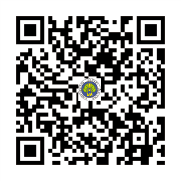Pengembangan instrumen penilaian bermuatan steam untuk mengukur kemampuan berpikir kreatif dan problem solving pada tema getaran dan gelombang
DOI:
https://doi.org/10.17977/um067v1i4p297-303Keywords:
Assesmen, Berpikir Kreatif, Problem Solving, STEAMAbstract
Kemajuan teknologi yang pesat menuntut masing-masing individu mampu menyelesaikan permasalahan yang dihadapi sehari-hari secara kreatif. Kemampuan berpikir kreatif dan problem solving merupakan suatu kemampuan yang harus dimiliki seseorang agar mampu mengikuti kemajuan teknologi. Melalui pembelajaran di kelas kemampuan berpikir kreatif dan problem solving dapat dikembangkan. Pembelajaran dengan menerapkan pendekatan STEAM akan memfasilitasi siswa mengembangkan kemampuan berpikir kreatif dan problem solving. Dibutuhkannya suatu alat ukur untuk mengetahi tingkat kemampuan berpikir kreatif dan problem solving siswa melalui suatu instrumen penilaian. Penelitian ini memiliki tujuan untuk mengembangkan assesmen kemampuan berpikir kreatif dan problem solving berpendekatan STEAM pada kategori valid daan reliabel. Penelitian ini menggunakan model 4-D terbatas pada tahap develop dikarenakan adanya keterbatasan waktu dan biaya. Produk yang dihasilkan pada kategori sangat layak dengan nilai rata-rata sebesar 94,4 persen. Uji empiris produk menunjukkan bahwa assesmen yang dikembangkan berada pada kategori valid dan reliabel.
References
Anugraheni, I. (2019). Pengaruh Pembelajaran Problem Solving Model Polya Terhadap Kemampuan Memecahkan Masalah Matematika Mahasiswa. Jurnal Pendidikan (Teori Dan Praktik), 4(1), 1.
Ary, D., Jacobs, L. C., & Razavieh, A. (2010). Introduction to research in education 8th edition, Wardswoth Cengage Learning. Canada: Nelson Education Ltd Exotic Classic.
Chasanah, L., Kaniawati, I., & Hernani, H. (2017, September). How to Assess Creative Thinking Skill in Making Products of Liquid Pressure?. In Journal of Physics: Conference Series (Vol. 895, No. 1, p. 012164). IOP Publishing.
Conner, L. D. C., Tzou, C., Tsurusaki, B. K., Guthrie, M., Pompea, S., & Teal-Sullivan, P. (2017). Designing STEAM for broad participation in science. Creative Education, 8(14), 2222.
Docktor, J. L., Dornfeld, J., Frodermann, E., Heller, K., Hsu, L., Jackson, K. A., ... & Yang, J. (2016). Assessing student written problem solutions: A problem-solving rubric with application to introductory physics. Physical review physics education research, 12(1), 010130.
Guspatni, G., & Kurniawati, Y. (2018, April). Validity and Reliability Testing of an e-learning Questionnaire for Chemistry Instruction. In IOP Conference Series: Materials Science and Engineering (Vol. 335, No. 1, p. 012102). IOP Publishing.
Henriksen, D. (2014). Full STEAM ahead: Creativity in excellent STEM teaching practices. The STEAM journal, 1(2), 15.
Mulhayatiah, D., Kindi, A., & Dirgantara, Y. (2019, February). Moodle-blended problem solving on student skills in learning optical devices. In Journal of Physics: Conference Series (Vol. 1155, No. 1, p. 012073). IOP Publishing.
Nuha, M. A., Waluya, S. B., & Junaedi, I. (2018). Mathematical Creative Process Wallas Model in Students Problem Posing with Lesson Study Approach. International Journal of Instruction, 11(2), 527-538.
Nurhikmayati, I. (2019). Implementasi STEAM Dalam Pembelajaran Matematika. Didactical Mathematics, 1(2).
Rahayu, I. A. T., & Adistana, G. A. Y. P. (2018). Mengembangkan Keterampilan Memecahkan Masalah Melalui Pembelajaran Berdasar Masalah. JP (Jurnal Pendidikan): Teori dan Praktik, 3(2), 86-91.
Ringo, E. S., Kusairi, S., Latifah, E., & Tumanggor, A. M. (2019, December). Student’s Problem Solving Skills in Collaborative Inquiry Learning Supplemented by Formative E-Assessment: Case of Static Fluids. In Journal of Physics: Conference Series (Vol. 1397, No. 1, p. 012012). IOP Publishing.
Ary, D., Jacobs, L. C., & Razavieh, A. (2010). Introduction to research in education 8th edition, Wardswoth Cengage Learning. Canada: Nelson Education Ltd Exotic Classic.
Chasanah, L., Kaniawati, I., & Hernani, H. (2017, September). How to Assess Creative Thinking Skill in Making Products of Liquid Pressure?. In Journal of Physics: Conference Series (Vol. 895, No. 1, p. 012164). IOP Publishing.
Conner, L. D. C., Tzou, C., Tsurusaki, B. K., Guthrie, M., Pompea, S., & Teal-Sullivan, P. (2017). Designing STEAM for broad participation in science. Creative Education, 8(14), 2222.
Docktor, J. L., Dornfeld, J., Frodermann, E., Heller, K., Hsu, L., Jackson, K. A., ... & Yang, J. (2016). Assessing student written problem solutions: A problem-solving rubric with application to introductory physics. Physical review physics education research, 12(1), 010130.
Guspatni, G., & Kurniawati, Y. (2018, April). Validity and Reliability Testing of an e-learning Questionnaire for Chemistry Instruction. In IOP Conference Series: Materials Science and Engineering (Vol. 335, No. 1, p. 012102). IOP Publishing.
Henriksen, D. (2014). Full STEAM ahead: Creativity in excellent STEM teaching practices. The STEAM journal, 1(2), 15.
Mulhayatiah, D., Kindi, A., & Dirgantara, Y. (2019, February). Moodle-blended problem solving on student skills in learning optical devices. In Journal of Physics: Conference Series (Vol. 1155, No. 1, p. 012073). IOP Publishing.
Nuha, M. A., Waluya, S. B., & Junaedi, I. (2018). Mathematical Creative Process Wallas Model in Students Problem Posing with Lesson Study Approach. International Journal of Instruction, 11(2), 527-538.
Rahayu, I. A. T., & Adistana, G. A. Y. P. (2018). Mengembangkan Keterampilan Memecahkan Masalah Melalui Pembelajaran Berdasar Masalah. JP (Jurnal Pendidikan): Teori dan Praktik, 3(2), 86-91.
Ringo, E. S., Kusairi, S., Latifah, E., & Tumanggor, A. M. (2019, December). Student’s Problem Solving Skills in Collaborative Inquiry Learning Supplemented by Formative E-Assessment: Case of Static Fluids. In Journal of Physics: Conference Series (Vol. 1397, No. 1, p. 012012). IOP Publishing.
Rizal, R., Rusdiana, D., Setiawan, W., & Siahaan, P. (2020, April). Creative thinking skills of prospective physics teacher. In Journal of Physics: Conference Series (Vol. 1521, No. 2, p. 022012). IOP Publishing.
Sambada, D. (2012). Peranan kreativitas siswa terhadap kemampuan memecahkan masalah fisika dalam pembelajaran kontekstual. Jurnal Penelitian Fisika dan Aplikasinya (JPFA), 2(2), 37-47.
Torrance, E. P. (1974). Norm-Technical Manual Torrance Test of Creative Thinking, Verbal test, form A and B. Figural test, form A and B. Lexing ton, Massachusetts: Personal Press Inc.
Wahyuni, S., & Husein, S. (2019, June). Physics learning devices based on guided inquiry with experiment to improve students’ creativity. In Journal of Physics: Conference Series (Vol. 1233, No. 1, p. 012034). IOP Publishing.
Yulianti, E., & Zhafirah, N. (2020). Peningkatan Kemampuan Penalaran Ilmiah Siswa Sekolah Menengah Pertama Melalui Model Pembelajaran Inkuiri Terbimbing. Jurnal Penelitian Pendidikan IPA, 6(1), 125-130.




1.png)
4.png)










